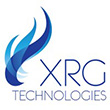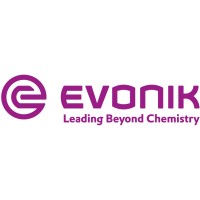-
Level, interface and multiphase measurement. The Profiler™ GPS provides a ‘window’ into the vessel to enable the operator to improve production throughput, reduce the number of unscheduled shutdowns and achieve significant cost savings. The Profiler™ GPS has no moving parts and is installed in some of the most challenging and diverse applications, ranging from subsea oil and gas processing, to downstream refining. Key features - Extremely reliable with zero moving ...
-
Axens catalysts and adsorbents
Decades of scientific achievement in catalyst and adsorbent research, product development, engineering expertise, process licensing technologies, manufacturing capability, and industrial feedback form the basis of the most advanced and reliable catalysts and adsorbents available anywhere to serve the refining, petrochemical, chemicals, gas, alternative fuels and water industries. Our products, which constitute the most complete portfolio on the market, are grouped according ...
-
Maximize the value of your naphtha feedstocks and downstream processes
New solutions for changing needs Lighten the burden of heavy feedstocks with Topsoe catalysts, process designs and technologies. If your refinery is like most, you’re under pressure to squeeze more value out of heavier feedstocks, and this presents new challenges for catalysts. To name just one example, increasing use of coker feedstocks has led to higher silica and nitrogen levels in the naphtha streams, requiring catalysts with superior HDN activity and greater surface ...
-
Oil sands crude — profits and problems?
Canadian bitumen production currently runs about 1 MMbpd, with some being sold as Synbit and Dilbit. Over the next 10-12 years output is expected to increase to 3.5 MMbpd and more refiners will begin investing to process it and come to depend on the Synbit and Dilbit for a significant part of their supply. Few today, however, have ever processed these feeds at high blend ratios, and are unaware that conventional process and equipment designs are not up to the job. Canadian oil ...
-
LB 350 - Online Moisture Analyzer
Radiometric moisture analyser for representative and robust measurements on bulk material. The LB 350 is a moisture measurement system for real-time determination of the moisture content of a wide variety of different bulk materials such as: * Coke * Sinter mixture * Ore * Sand * Building material
-
RIVE® FCC catalyst represents the first and only use of ordered mesoporosity in FCC zeolites or catalysts, and is capable of providing a step change in value for many FCC operations. The result: enhanced diffusion of hydrocarbons both into and out of the catalyst particle. This adds options to process heavier feeds, reduce feedstock costs, circulate more catalyst, and preserve valuable products increasing operating flexibility for the refiner.
-
Real-Time Measurement for Unparalleled Safety and Product Quality Control. Analyzer solutions to reduce natural gas process downtime, ensure safe operation, and meet stringent product quality requirements. Natural gas is an important part of the world’s energy supply. From feedstock for production processes to generating electrical power, the transportation, distribution, storage, and processing of natural gas has a global impact. Natural gas must meet specific requirements ...
-
Governments and businesses are increasingly committed to steep decarbonization targets, establishing hydrogen as a key component in the energy transition. As of this writing, McKinsey reports that 64 countries, representing 89% of global CO2 emissions, have made net-zero pledges, while financial institutions and private sector enterprises also continue to increase their decarbonization aspirations. Going forward, the energy mix is projected to shift toward clean electricity, complemented ...
-
New bypass line between diesel draw-off line to side stripper, new bypass valve, incl. update of P&ID, piping isometrics and pipe
-
Unrivalled combustion expertise - Superior heat transfer solutions
XRG Technologies is an innovative engineering and procurement firm specializing in fired equipment for the refining, petrochemical, and power markets. We collaborate with our partners to solve complex problems and manage projects from concept to completion. Our staff of industry experts will partner with you and function as your outside engineering support team. We have brought together a team of burner, fired heater, boiler, flare, vapor recovery and thermal oxidizer experts ...
-
Density measurement for resid hydrocrackers
Level and density measurement on Resid Hydrocracker reactors. The resid hydrocracking process is becoming more and more attractive to refiners as it allows a higher conversion rate than other heavy oil conversion processes. It is used to crack heavy fractions to achieve lighter and more valuable products. Resid hydrocrackers are challenging to operate due to the complex set of reaction vessels, catalyst handling and separating units, and elevated temperatures and pressures in ...
-
Lummus Technology Green Circle - Hydrogen
Global energy demand is expected to grow 50% by 2050 (IEA) as populations grow and over 1 billion people move into the middle class. Simultaneously, governments and corporations have set ambitious goals to reduce their environmental impacts through carbon reduction and greenhouse gas emission cuts to become carbon neutral and address climate change. Hydrogen is in a unique position to support this increase in energy demand and decrease in carbon and greenhouse gas emissions ...
-
Optimise crude processing with the Profiler™
The Challenge: Refiners aim to optimise feedstock blends to improve margins, but variability can bring significant operational challenges during the process. One critical need is the efficient removal of solids, salts and water from crude feedstock. It is essential that washing of the crude is effective at removing high levels of these, and the oilcan be efficiently separated prior to crude distillation. Efficient separation needs accurate and reliable interface control to manage ...
-
Optimizing the value of your unloaded catalyst
The metals contained in spent catalysts offer a valuable follow-on revenue source, but how can you be sure to achieve a fair settlement or receive top dollar? You also need to balance demands of sustainability and lowered environmental impact with ease of recovery and settlement. This webinar gives you an introduction to the precious and base metal management cycle in catalysts and specifically provides you with tips for ensuring a high quality and accurate precious metal settlement, ...
-
Unleash the potential of your Naphtha Steam Cracker
The global ethylene market grows at 3.0-3.5% annually, which amounts to 6-7 MM MTA increase in demand every year. Greater than 95% of ethylene is produced using steam cracking. The two of the main feedstocks for steam crackers are naphtha and ethane with each supplying >45% of all ethylene production. Ethane cracking tends to have lower Cash Cost of Production, supply is regional and insufficient to meet the global ethylene demand. Naphtha cracking has several disadvantages: ...
-
CDU desalter processing with interface control
In this webinar, you will find out how Tracerco’s advanced multi-phase nucleonic instrumentation can analyse desalter performance and improve crude blending capacity. Discover opportunities to: - Improve environmental impact, compliance and energy usage - Reduce unplanned trips and downtime - Optimise chemical dosing (demulsifiers/neutralisers) - Reduce overhead corrosion, as well as catalyst deactivation in FCC - Improve process control enabling data driven insights With ...
-
An introduction to Sinopec Hydrocracking Technologies
This webinar gives you an overview and understanding of hydrocracking and its applications, with an emphasis on technologies and catalysts developed by Sinopec and its research arm, Sinopec Fushun Research Institute of Petroleum and Petrochemicals (Sinopec FRIPP). You will first get an introduction to hydrocracking including feed processing and target output products. Commercial considerations include market share and reference installations such as 40 hydrocracking units designed ...
-
How turbomachinery can support decarbonization
With the hydrocarbon processing industry’s efforts to decarbonize, hydrogen and Carbon Capture Utilization and Storage (CCUS) have further moved into focus as viable alternatives for transforming existing energy markets. Both hydrogen and CO2 provide ample opportunities to be used in hydrocarbon processes either in molecular form or as feedstock. At the same time, the unique physical properties of both hydrogen and CO2 can make them a challenge for process equipment such as ...
-
Technologies to enhance Ethylene production
In this presentation, three technologies will be introduced. This first is swirling element radiant tube (SERTTM) technology for steam cracking furnaces. In this technology, you will find how heat transfer theory is applied to overcoming the challenges of cracking pyrolysis to meet targets. Successful commercial cases will demonstrate the technical advantages of SERTTM technology. Cracking furnaces with SERTTM technology have longer operating days, lower tube wall temperature ...
-
Steam Cracker recycle processing and product upgrade options
LPG and light naphtha generated in a refinery complex (from both straight-run and conversion units) are sent to the ethylene cracker as feedstock. There is more i-paraffin than n-paraffin in LPG and light naphtha generated from a hydrocracker and reformer, in particular, i-butane and i-pentane. When cracking i-paraffin and n-paraffin separately in an ethylene cracker, the yield of ethylene and propylene is different; n-paraffin can generate 20wt% of “ethylene + propylene + butadiene” ...
-
Advances in benzene derivatives production
Xylene and ethylbenzene are important benzene derivatives. In this presentation, you will learn about recent advances in the production process and catalysts of xylene and ethylbenzene. Xylene production is one of the most important aromatic producing processes. You will learn the details of process technology introduction and catalyst features of aromatics transalkylation developed by Sinopec, as well as the process strategies of raw material expansion, Inferior feed tolerance, ...
-
Deep catalytic cracking technology for maximizing the production of chemicals
Optimization of light olefins (including ethylene, propylene and butene) production has become one of the most competitive options for refiners in the transition. Compared with conventional FCC, FCC technologies which optimized propylene production are helping refiners to restructure their product configuration, from fuel to petrochemical production. You will learn some successful commercial cases, which are aimed to help refiners to select the most suitable and competitive ...
-
Decarbonization with hydrogen solutions
Demand for hydrogen is expected to increase up to ten-fold by 2050 when multiple industry reports predict 8-24% of the world's final energy demand will be supplied by hydrogen. Hydrogen has a unique ability to address and ˜hard-to-decarbonize' sectors including refining, chemicals, steel, heating, long-haul transport, and long-term power storage and all of which currently produce significant CO2 emissions. To achieve this, hydrogen must be produced with significantly lower carbon ...
-
Enabling circularity via plastics chemical recycling
Chemical recycling of plastics is an emerging route to supplement mechanical recycling since polymers can be converted into monomer form. As opposed to mechanical recycling, wherein the polymer properties degrade with each cycle, the monomers can be re-polymerized without any polymer property degradation. Petrochemical and refining operations of the future will include more plastics oil, obtained from chemical recycling, in the feedstock mix to establish circularity in the ...
-
Best Practice: Screening and QC testing of petroleum products and fuels
Screening and quality control of petroleum products and fuels can be a tedious and expensive process when performed utilizing traditional methods. Near-Infrared spectroscopy (NIRS) as described in ASTM Guidelines E1655, D8340, and D6122 is a much faster method providing results in just 30 seconds without any solvents and reagents needed. In fact, NIRS has become the preferred method of numerous producers to quickly quantify key parameters in petrofuels and petrochemicals ...
-
Understanding alarm management standards
Alarms are an essential layer of protection, enabling industrial facilities to avoid abnormal situations that may put people, the environment, and profits at risk. As such, numerous standards and guidelines exist that can assist organizations in designing, implementing and maintaining alarm systems that comply with regulations. ISA 18.2, EEMUA 191, IEC 62682, API 1167 — how should organizations select these standards and guidelines? How can they be put into practice? Join ...


































